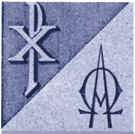Proof of Conspiracy
by cameo-d 20 Replies latest watchtower scandals
-
-
Johnnytwofeet
I was just about to type taht cameo
-
cameo-d
And here you see the link to the beehive.
He who controls the slave bees controls industry!
-
BurnTheShips
Context for the shields above please?
The postage stamp is themed on the 125th anniversary of Dominican Republic Freemasonry history. It says as much underneath the shield.
Bees/beehive represent industry, and are a fairly common heraldic symbol.
Bees appear as a canting device for a number of families: the English families Bye, Bee, Beebee, Beeston; the French families Abeille, Melet de Saint-Martin, Mellier, Mieulet (honey=miel in French); German family Biene; Flemish family Bezoet de Bie; Dutch family van Byemont; Spanish families Abello, Abella; Greek family Melisurgo de Melissenos; etc.
The bee is found in British heraldry, aside from the canting arms mentioned above: Dore (per pale azure and gules three bees or), Abercromby baron Abercromby (crest: a bee proper), Samuel, Gerlington and Sewell (sable a chevron between three bees volant erect argent), Byres (azure a chevron between three bees argent), de Verthon (Azure on a fess argent a bee volant arriere sable), Butterfield (Or on a bend azure three bees volant argent), Campbell of Gargamock (Gironny of eight ermine and gules on each of the last a bee volant argent). Earl Beatty of the North Sea: Azure a beehive beset by nine bees volant or, on a chief argent a cross of St. George gules.
Bees are a symbol of industriousness. Thus, Sir Robert Peel, baronet (1800) was a textile manufacturer and philanthropist (his son was the Prime Minister): they bore Argent, three sheaves of as many arrows proper banded gules, on a chief azure a bee volant or. Also, Arkwright of Willersley in Derbyshire: Argent on a mount vert a cotton tree fructed proper on a chief azure between two besants an inescutcheon of the field charged with a bee volant proper. Sir Richard Arkwright (1732-92) was the inventor of the cotton jenny. As the two bezants indicate, he did well by his invention.
Azure three bees or are the arms of the Barberini, including Pope Urban VIII (1623-44, born Maffeo Barberini). Interestingly, the original name of this Florentine family was Tafani, later Tafani da Barberino. Their arms were gules three horse-flies or, the arms canting (tafani=horse-flies). Later the flies became bees and the tinctures changed, although the original tinctures can still be found occasionally, e.g., on the pope's monument in St Peter's. (see more on papal heraldry)
Hummel in Bavaria bears Argent, on a bend or three bees of the first, their heads downwards (yes, double violation of the tincture rule!).
De la Fontaine Wicart (Belgium, Netherlands) bears Azure a semy of bees or, Scleros in Greece bears gules a semy of bees volant or. Guyot de Saint-Remy (Lorraine) bears azure on a semy of bees argent a beehive or, on a chief gules a crown or. Oftentimes a few bees surround a beehive.
Bees were used in Napoleonic heraldry. They were a reserved charge: no one could use a bee without a specific Imperial grant. Princes Grands Dignitaires received on a chief azure a semy of bees or as augmentation (Berthier de Wagram, Talleyrand, Bernadotte, Lebrun de Plaisance). The most important cities of the Empire received a chief gules charged with three bees or: Paris, Aachen, Amsterdam, Bremen, Brussels, Cologne, Dijon, Florence, Genoa, Ghent, Hamburg, Lyon, Parma.
BTS
-
BurnTheShips
Here is a conspiracy link for Cameo-D.
Records missing from the national archive. Including moon shots.
-
cameo-d
Why Hares used symbolically with the winepress?
For more information on the symbolism of the hares, see: http://www.jehovahs-witness.net/watchtower/bible/177157/1/Rabbits-in-the-Church
-
-
mkr32208
Yep thats proof all right, iron clad that argument...
-
cameo-d
From "Labors of the months"
relief sculpture from cathedral
July 23 - August 23
"sharpening a scythe"
-
cameo-d
Check out this calendar leaf from "The Book of Hours" (a rare medieval manuscript)
This rather ominous painting refers to the month of June.
http://libwww.library.phila.gov/medievalman/Detail.cfm?imagetoZoom=mcai110201




